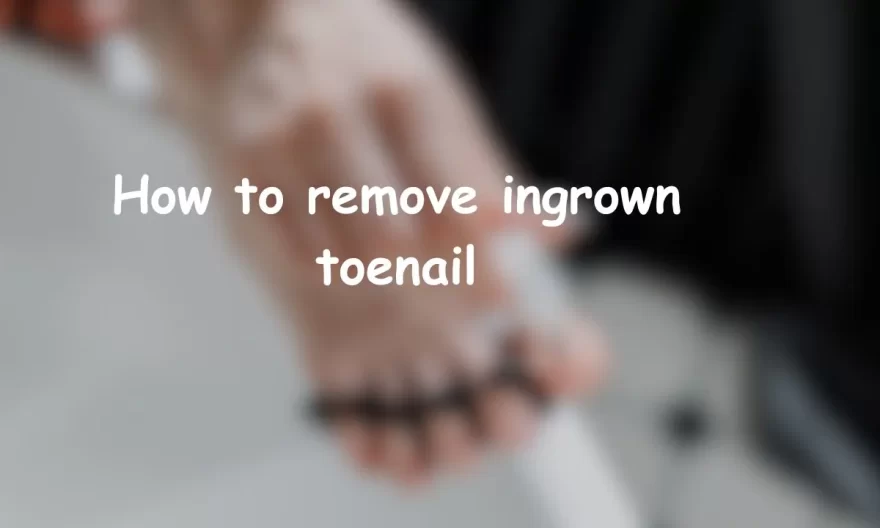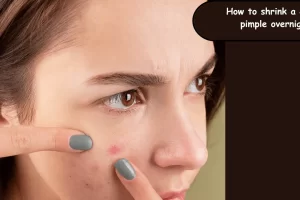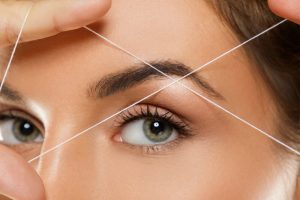
Table of Contents
Ingrown toenails, a common and often painful condition, occur when the edge of the toenail grows into the surrounding skin. This can lead to discomfort, inflammation, and even infection if left untreated. Although anyone can experience an ingrown toenail, certain factors such as improper footwear, irregular toenail trimming, and genetic predisposition can increase the risk. In this article, we will explore how to remove ingrown toenail, both at home and with professional help, as well as offer preventative measures to avoid future occurrences.
What causes ingrown toenails?
Ingrown toenails can be caused by a variety of factors, including:
Improper nail trimming: Cutting the toenails too short or curving them at the edges can encourage the nail to grow into the surrounding skin.
Tight or ill-fitting shoes: Wearing shoes that are too tight, narrow, or have a high heel can put pressure on the toes, pushing the nails to grow into the skin.
Trauma or injury: Injuries to the toe, such as stubbing, dropping heavy objects on the foot, or engaging in activities that cause repetitive pressure on the toenail, can contribute to the development of ingrown toenails.
Genetic predisposition: Some people have naturally curved or thick nails, which can make them more prone to ingrown toenails.
Poor foot hygiene: Lack of proper foot care, including not keeping the feet clean and dry, can increase the risk of ingrown toenails and infection.
Nail disorders: Conditions like fungal infections or nail deformities can alter the shape and growth pattern of the toenail, leading to ingrown toenails.
How to prevent ingrown toenails?
To prevent ingrown toenails, follow these tips and best practices:
Proper nail trimming
Cut your toenails straight across rather than rounding the corners. Keep the nails at a moderate length, avoiding cutting them too short. Use clean, sharp nail clippers for the task.
Appropriate footwear
Wear comfortable shoes with enough room for your toes to move freely. Avoid tight, narrow, or high-heeled shoes that put pressure on your toenails. Opt for shoes made of breathable materials to prevent moisture buildup.
Maintain foot hygiene
Wash your feet daily with soap and water, and dry them thoroughly, paying attention to the spaces between your toes. This helps keep your feet clean and reduces the risk of infection.
Socks and hosiery
Choose socks made of moisture-wicking materials, such as cotton or wool, to keep your feet dry. Make sure your socks fit properly, without bunching or squeezing your toes.
Protect your feet
If you’re involved in activities that may cause toe injuries, wear protective footwear. Additionally, be cautious when moving heavy objects to avoid accidentally dropping them on your foot.
Regular foot inspections
Periodically examine your feet for signs of redness, swelling, or other issues. This can help you identify potential problems early and seek treatment if necessary.
Avoid picking or tearing
Resist the urge to pick at or tear off bits of your toenails, as this can lead to irregular nail growth and increase the risk of ingrown toenails.
Foot care for diabetics
If you have diabetes, take extra care of your feet and consult a healthcare professional for regular foot checkups. Diabetes can lead to reduced blood flow and nerve damage in the feet, making it harder to notice an ingrown toenail or infection.
How to treat ingrown toenails at home?
If you have a mild ingrown toenail without signs of infection, you can try the following home remedies to alleviate the pain and promote healing:
Soak your foot: Soak the affected foot in warm water mixed with Epsom salt for 15-20 minutes, 3-4 times a day. This can help to reduce swelling and soften the skin around the ingrown toenail, making it easier to gently lift the nail edge away from the skin.
Use cotton or dental floss: After soaking your foot, carefully place a small piece of cotton or dental floss under the ingrown nail edge to lift it away from the skin. This can help guide the nail to grow outward rather than into the skin. Change the cotton or floss daily to maintain cleanliness.
Apply antibiotic ointment: Clean the affected area and apply over-the-counter antibiotic ointment to prevent infection. Cover the toe with a bandage to keep the area clean.
Pain relievers: Use over-the-counter pain relievers such as acetaminophen, ibuprofen, or naproxen to manage pain and inflammation.
Proper footwear: While your ingrown toenail is healing, wear open-toed shoes or sandals to reduce pressure on the affected toe.
Keep the foot elevated: Elevate the affected foot when possible to help reduce swelling.
Please note that these home remedies are only suitable for mild cases of ingrown toenails. If your condition worsens, if you notice signs of infection (such as increased redness, pus, or a foul odor), or if you have an underlying health condition like diabetes, it’s essential to consult a healthcare professional for proper treatment.
When should I see a doctor for an ingrown toenail?
It’s important to see a doctor or podiatrist for an ingrown toenail in the following situations:
- Infection
If you notice signs of infection, such as increased redness, swelling, pus, or a foul odor, it’s crucial to consult a healthcare professional. Infections can become severe and may require antibiotics or more advanced treatments.
- Severe pain or discomfort
If your ingrown toenail is causing significant pain that interferes with your daily activities or doesn’t improve with home remedies, seek medical attention.
- Recurrent ingrown toenails
If you experience ingrown toenails frequently or if they keep coming back after treatment, consult a doctor to discuss more permanent solutions.
- Underlying health conditions
If you have diabetes, poor circulation, or a compromised immune system, it’s important to see a healthcare professional for even mild cases of ingrown toenails. These conditions can make it harder for your body to heal and increase the risk of complications.
- No improvement with home treatment
If you’ve tried home remedies for a week or two without any improvement in your condition, seek medical advice. A doctor can assess your situation and recommend appropriate treatments.
What are the symptoms of an infected ingrown toenail?
An infected ingrown toenail can exhibit several symptoms, which may include:
Pain: The affected toe may experience increased pain, tenderness, or throbbing.
Redness: The skin around the ingrown toenail may appear red and inflamed.
Swelling: The toe and surrounding area may become swollen and feel warm to the touch.
Pus: You may notice pus oozing from the ingrown toenail area, indicating a bacterial infection.
Foul odor: An unpleasant smell may be present due to the infection.
Overgrowth of skin: In some cases, extra tissue, known as granulation tissue, may grow around the affected area, further indicating an infection.
Fever: Although less common, you may experience a fever if the infection is severe or has spread to other areas.
How do podiatrists treat ingrown toenails?
Podiatrists, or foot specialists, have several treatment options for ingrown toenails, depending on the severity and whether an infection is present. Some of the treatments include:
Conservative treatment
For mild cases, a podiatrist may recommend conservative treatments, such as soaking the foot, gently lifting the nail, and using over-the-counter pain relievers. They may also provide guidance on proper nail trimming techniques and footwear to prevent future occurrences.
Partial nail avulsion
If the ingrown toenail is more severe or infected, the podiatrist may perform a partial nail avulsion. In this procedure, the affected part of the nail is removed after the toe is numbed using a local anesthetic. The area is then cleaned and dressed, and an antibiotic ointment may be applied to prevent infection.
Complete nail removal
In cases where the entire toenail is causing problems or the condition is recurrent, the podiatrist may recommend removing the entire nail. This procedure, called a total nail avulsion, is done under local anesthesia.
Matrixectomy
For recurrent ingrown toenails, a matrixectomy may be performed. This procedure involves removing the affected part of the nail and destroying the nail matrix (the tissue responsible for nail growth) with a chemical or laser treatment. This prevents the problematic section of the nail from regrowing.
Oral or topical antibiotics
If an infection is present, the podiatrist may prescribe oral or topical antibiotics to help clear the infection.
Foot care advice
A podiatrist can provide personalized advice on proper foot care, nail trimming, and footwear to prevent future ingrown toenails.
Can ingrown toenails recur after treatment?
Yes, ingrown toenails can recur after treatment. While treatments such as partial nail avulsion or conservative home remedies can provide relief and resolve the issue temporarily, there is still a possibility that the ingrown toenail may return, particularly if the underlying causes are not addressed.
To minimize the chances of recurrence, it’s important to:
Practice proper nail trimming techniques: Cut your toenails straight across and avoid cutting them too short or rounding the corners.
Wear appropriate footwear: Choose shoes that fit well, provide adequate room for your toes, and are made of breathable materials to reduce pressure on your toenails.
Maintain good foot hygiene: Keep your feet clean and dry, and wear moisture-wicking socks to prevent infections and other foot problems.
Monitor your feet: Regularly check your feet for signs of ingrown toenails or other issues, so you can address them early on.
Frequently Asked Questions
Q1: Can I cut out an ingrown toenail?
Ans: It’s not recommended to cut out an ingrown toenail yourself, as it may worsen the condition or lead to infection. Consult a healthcare professional instead.
Q2: Can tight shoes cause ingrown toenails?
Ans: Yes, tight or ill-fitting shoes can put pressure on your toenails, increasing the risk of developing ingrown toenails.
Q3: Is it safe to exercise with an ingrown toenail?
Ans: It depends on the severity. Mild cases may be manageable with proper footwear, but avoid activities that put pressure on the affected toe.
Q4: Can pedicures cause ingrown toenails?
Ans: Improper pedicure techniques, such as rounding the corners of the nails or cutting them too short, can contribute to ingrown toenails.
Q5: Are ingrown toenails more common in adults or children?
Ans: Ingrown toenails can occur at any age, but they are more common in adolescents and adults due to factors like improper nail trimming and tight footwear.


